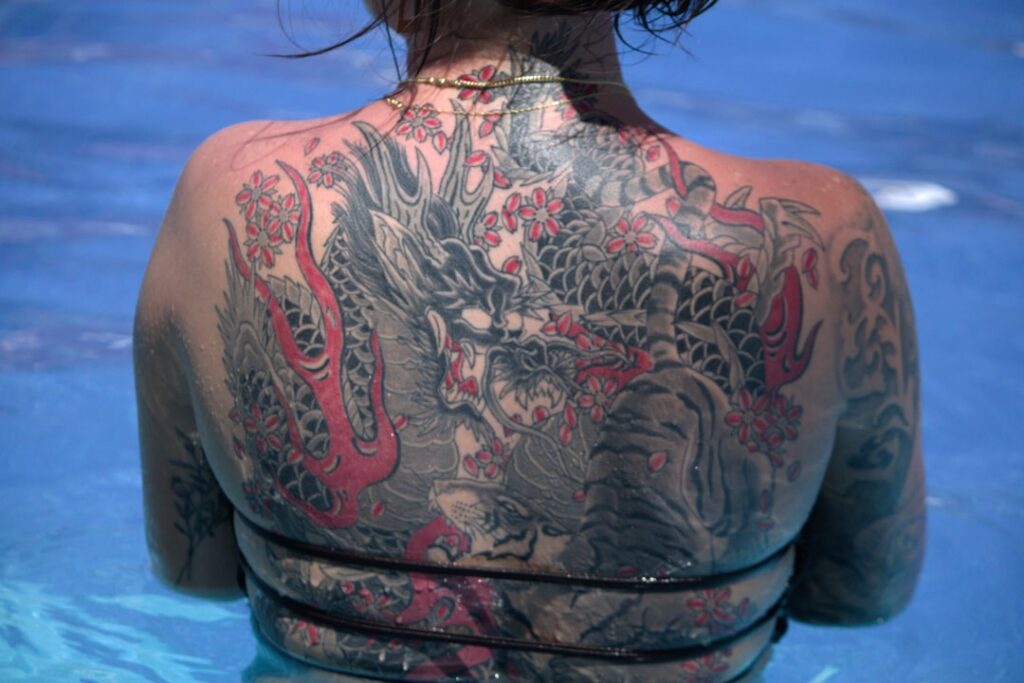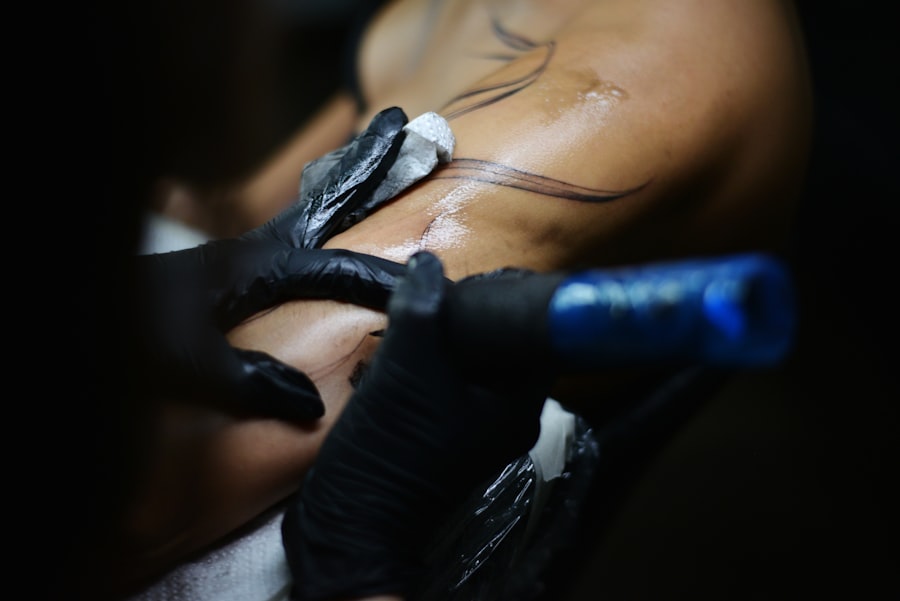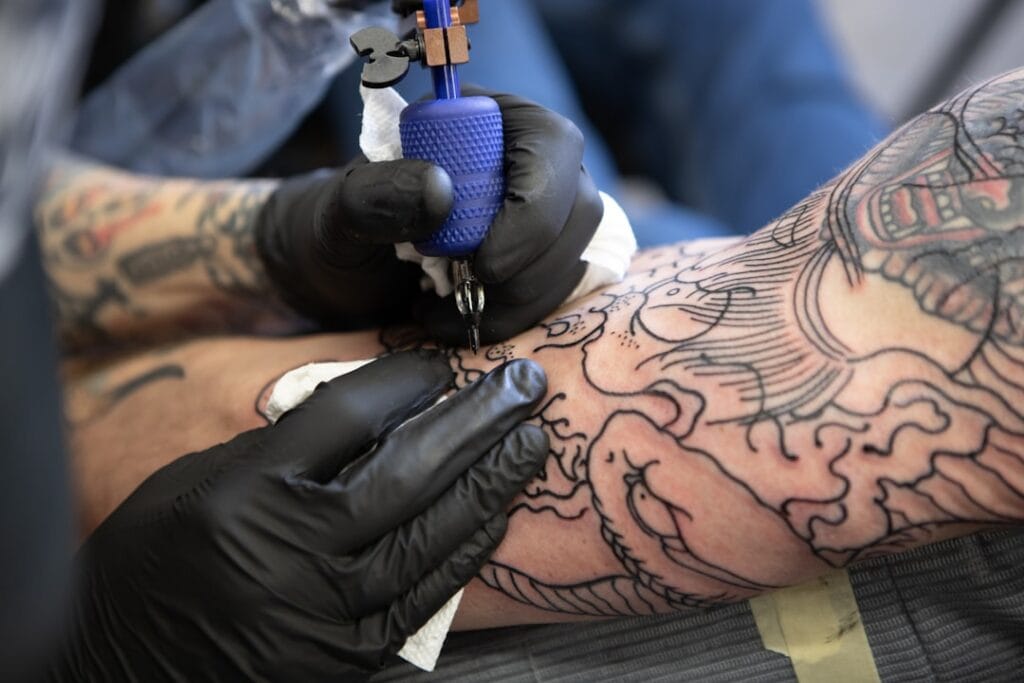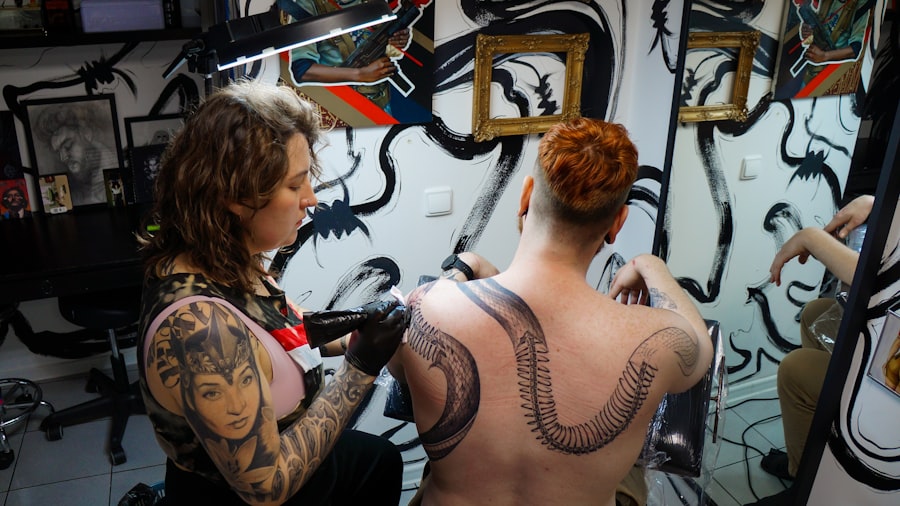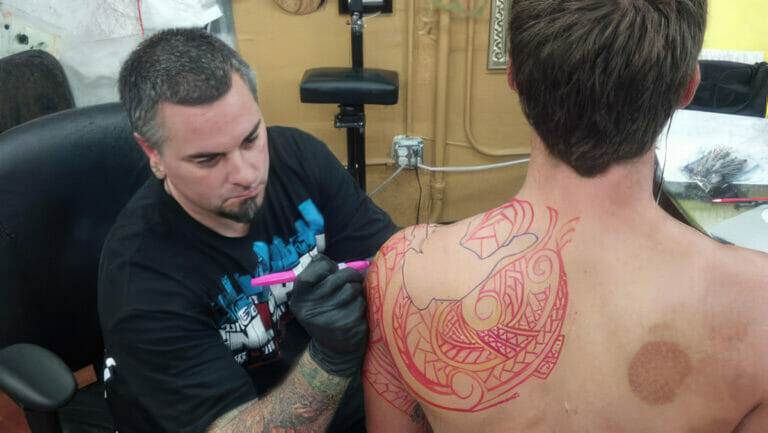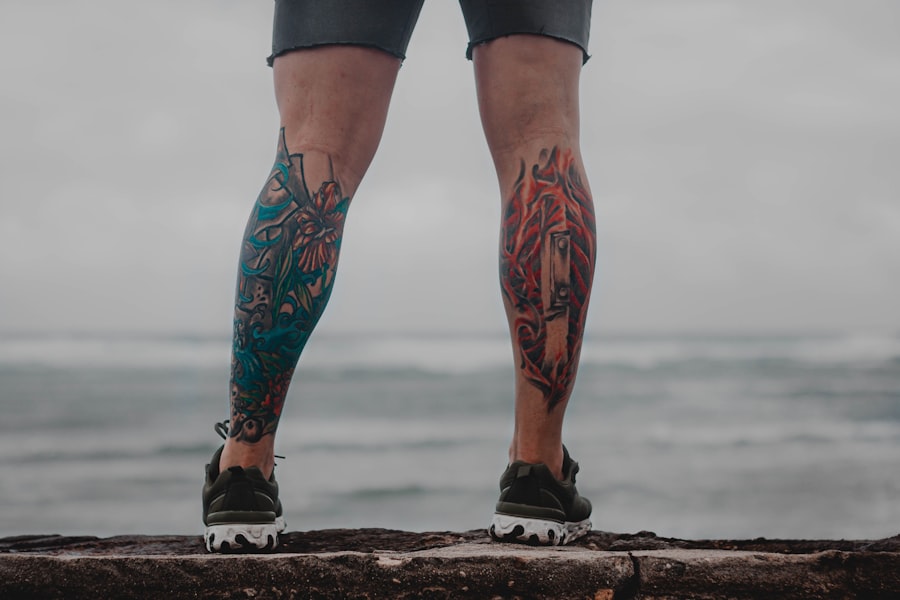
Aftercare is a crucial aspect of the tattooing process that can significantly influence the final outcome of your new ink. When individuals neglect to follow the aftercare instructions provided by their tattoo artist, they risk compromising the integrity of their tattoo. These guidelines are designed to promote healing and ensure that the tattoo retains its vibrancy and detail.
Ignoring these instructions can lead to a variety of issues, including infection, fading, and uneven healing. The aftercare process typically includes keeping the tattoo clean, applying ointment, and avoiding certain activities. Failing to adhere to these steps can result in complications that may require additional treatments or touch-ups.
For instance, if a person does not clean their tattoo properly, they may introduce bacteria that can lead to infections. Additionally, skipping moisturizing steps can cause the skin to dry out, leading to cracking and peeling that can distort the design. Therefore, it is essential to take these instructions seriously to ensure a successful healing process.
Key Takeaways
- Not following aftercare instructions can lead to infection and poor healing of the tattoo.
- Touching the tattoo with dirty hands can introduce bacteria and cause infection.
- Using too much ointment or lotion can clog pores and hinder the healing process.
- Exposing the tattoo to direct sunlight can cause fading and damage to the skin.
- Submerging the tattoo in water can lead to infection and fading of the tattoo.
Touching the tattoo with dirty hands
One of the most common mistakes people make after getting a tattoo is touching it with unwashed hands. The skin is a barrier that protects against pathogens, but when a fresh tattoo is exposed to dirty hands, it becomes vulnerable to infection. The risk of introducing bacteria or other harmful microorganisms increases significantly when individuals fail to maintain proper hygiene.
This can lead to complications that not only affect the appearance of the tattoo but also pose health risks. Moreover, touching a healing tattoo can disrupt the scabbing process, which is essential for proper healing. The scabs form as part of the body’s natural healing response, and when they are disturbed, it can lead to uneven healing or even scarring.
To avoid these issues, it is vital to keep hands clean and refrain from touching the tattoo unless necessary for cleaning or applying ointment. Practicing good hygiene will help ensure that the tattoo heals correctly and remains vibrant for years to come.
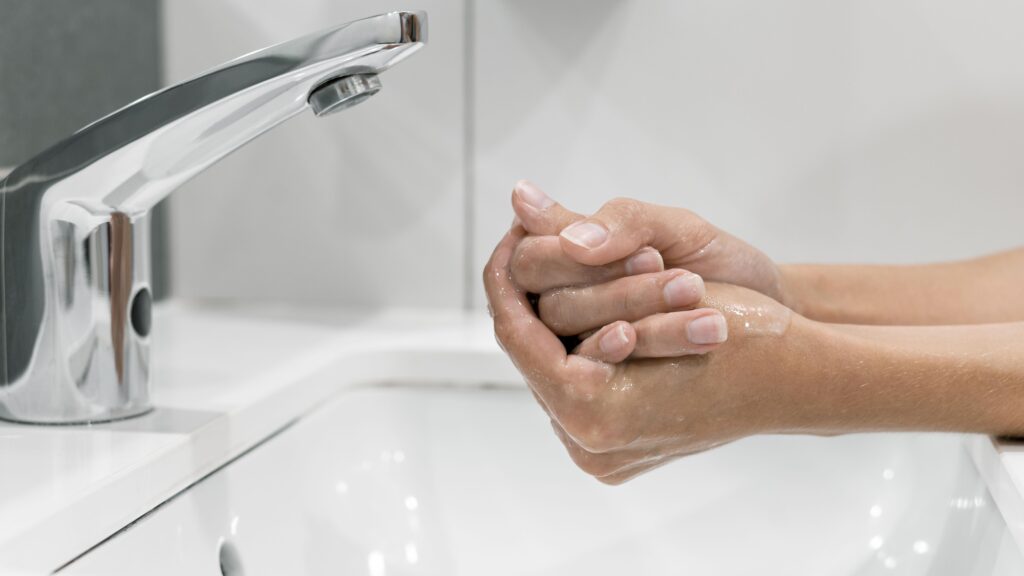
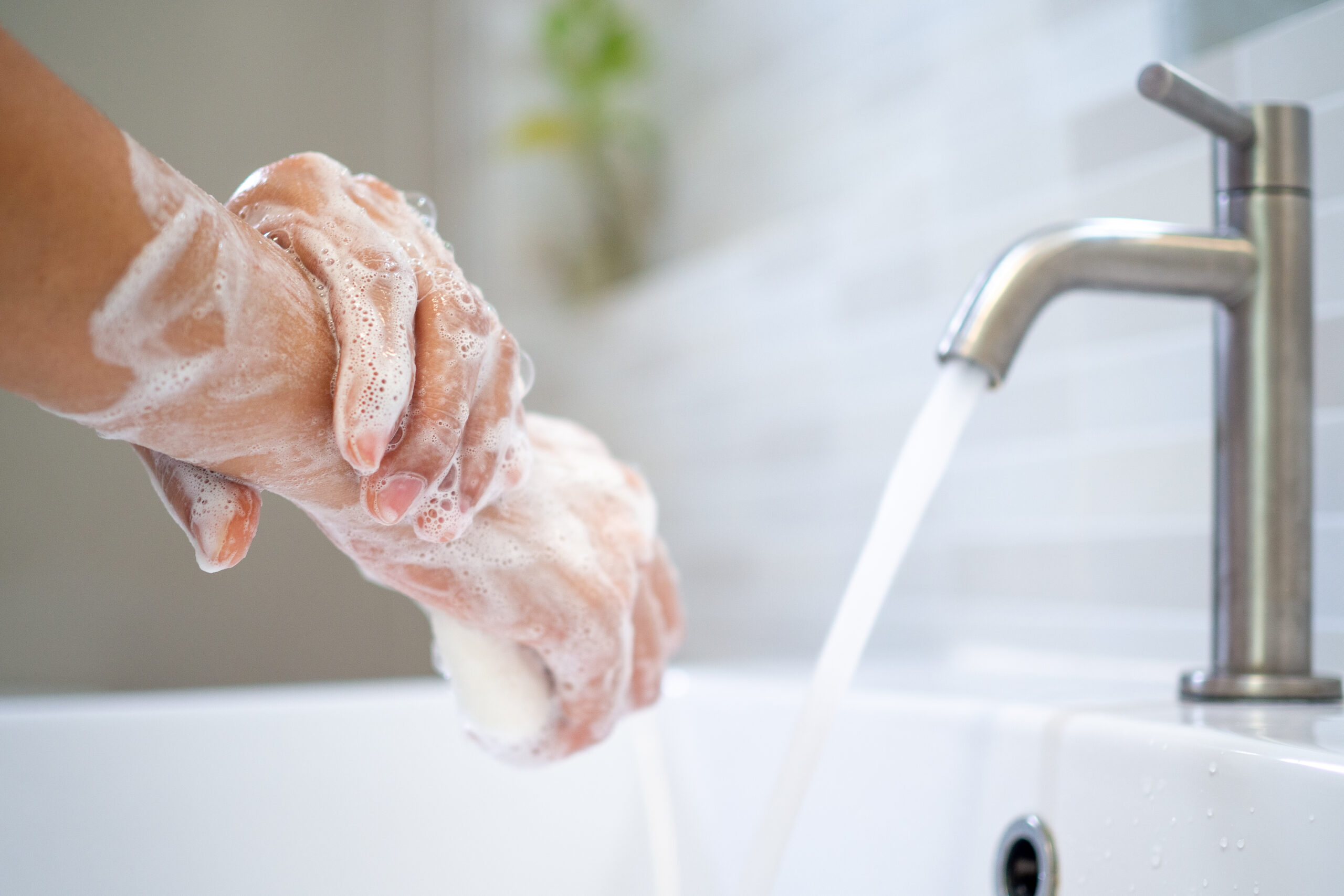
Using too much ointment or lotion
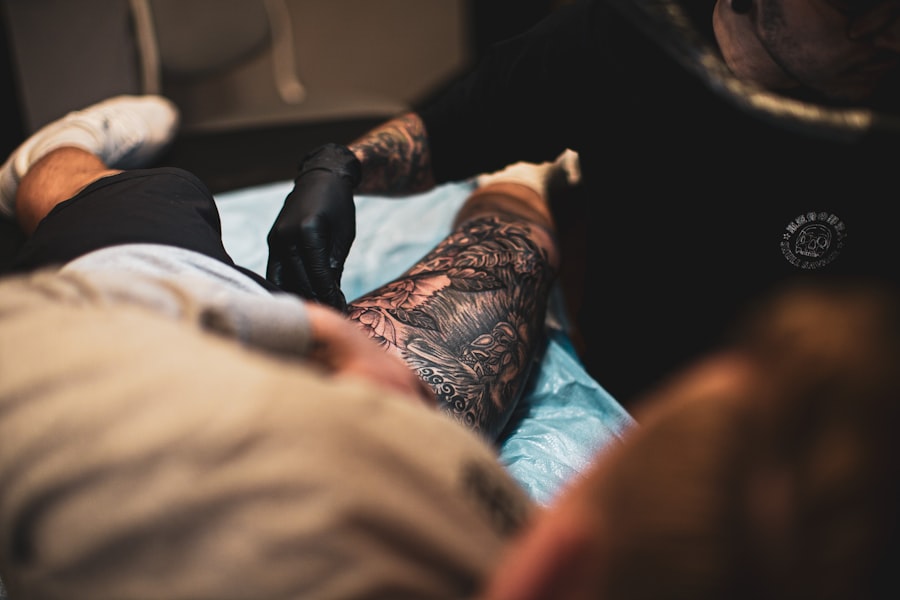
While moisturizing a new tattoo is important for its healing process, using too much ointment or lotion can be counterproductive. Many people mistakenly believe that slathering on excessive amounts of product will speed up healing or enhance the appearance of their tattoo. However, this can lead to clogged pores and hinder the skin’s ability to breathe, which is essential during the healing phase.
Over-application can create a barrier that traps moisture and bacteria against the skin, increasing the risk of infection. Finding the right balance in moisturizing is key. A thin layer of ointment or lotion is usually sufficient to keep the tattoo hydrated without overwhelming the skin.
It is advisable to follow the recommendations provided by your tattoo artist regarding the type and amount of product to use. By doing so, you can promote healthy healing while ensuring that your tattoo retains its intended design and vibrancy.
Exposing the tattoo to direct sunlight
Sun exposure can be detrimental to a healing tattoo, as ultraviolet (UV) rays can cause fading and damage to the skin. Fresh tattoos are particularly susceptible because the skin is still in a vulnerable state as it heals. Direct sunlight can lead to discoloration and may even result in scarring if the skin becomes burned.
Therefore, it is crucial to protect your new ink from sun exposure during the initial healing period. To safeguard your tattoo from harmful UV rays, consider wearing protective clothing or applying a high-SPF sunscreen once the tattoo has fully healed. This will help maintain its vibrancy and prevent premature fading.
Additionally, avoiding tanning beds and prolonged sun exposure during the healing phase will contribute to a better overall outcome for your tattoo. Taking these precautions will ensure that your artwork remains as stunning as it was on the day you got it.
Submerging the tattoo in water
Submerging a new tattoo in water can pose significant risks during the healing process. Activities such as swimming in pools, hot tubs, or even taking long baths can expose the tattoo to bacteria and other contaminants that thrive in water. The moisture can also soften scabs and disrupt the healing process, leading to uneven healing or loss of detail in the design.
It is generally recommended to avoid submerging a new tattoo for at least two weeks or until it has fully healed. Instead, opt for quick showers while keeping the tattoo out of direct water flow. If you must wash the area, do so gently with mild soap and pat it dry with a clean towel afterward.
By being mindful of water exposure during this critical period, you can help ensure that your tattoo heals properly and maintains its intended appearance.
Scratching or picking at the healing tattoo

The urge to scratch or pick at a healing tattoo can be strong, especially as it begins to itch during the recovery process. However, this behavior can have serious consequences for both the appearance of the tattoo and overall skin health. Scratching can lead to scarring, color loss, and even infection if bacteria are introduced into open wounds created by picking at scabs.
Instead of succumbing to the temptation to scratch, it is essential to find alternative ways to alleviate discomfort. Applying a thin layer of moisturizer can help soothe itching without compromising the integrity of the tattoo. If itching persists, consider consulting with your tattoo artist or a dermatologist for advice on safe remedies.
By resisting the urge to scratch or pick at your tattoo, you will promote better healing and preserve the quality of your artwork.
Wearing tight or abrasive clothing over the tattoo
The type of clothing worn over a new tattoo can significantly impact its healing process. Tight or abrasive fabrics can irritate the skin and cause friction against the fresh ink, leading to discomfort and potential damage to the design. This irritation can result in excessive redness, swelling, or even blistering in some cases, which may compromise both healing and appearance.
To promote optimal healing conditions for your new tattoo, it is advisable to wear loose-fitting clothing made from soft materials during the initial recovery period. This will minimize friction and allow air circulation around the tattooed area, aiding in faster healing. Additionally, avoiding clothing with seams or rough textures will further reduce irritation and help maintain the integrity of your artwork as it heals.
Neglecting to keep the tattoo clean and moisturized
Maintaining cleanliness and moisture is vital for ensuring that a new tattoo heals properly. Neglecting these aspects can lead to various complications that may affect both health and aesthetics. A clean environment helps prevent infections while adequate moisture keeps the skin supple and promotes healthy regeneration of cells around the inked area.
To keep your tattoo clean, gently wash it with mild soap and lukewarm water at least once a day during the healing process. After washing, pat it dry with a clean towel rather than rubbing it vigorously. Following this step with a thin layer of appropriate moisturizer will help lock in hydration without overwhelming the skin.
By prioritizing cleanliness and moisture throughout the healing period, you will set your tattoo up for success and ensure that it remains vibrant for years to come. In conclusion, taking care of a new tattoo requires diligence and attention to detail. By avoiding common pitfalls such as neglecting aftercare instructions, touching with dirty hands, overusing ointments, exposing it to sunlight, submerging it in water, scratching or picking at it, wearing tight clothing, and failing to keep it clean and moisturized, you can significantly enhance your chances of achieving a beautiful and lasting piece of art on your skin.
Remember that your tattoo is not just an expression of art; it’s also an investment in your body that deserves proper care and respect during its healing journey.
FAQs
What are some common tattoo aftercare mistakes that can cause infections?
Some common tattoo aftercare mistakes that can cause infections include not keeping the tattoo clean, using harsh cleaning products, picking or scratching at the tattoo, not moisturizing the tattoo properly, exposing the tattoo to direct sunlight, and not following the aftercare instructions provided by the tattoo artist.
How can not keeping the tattoo clean cause infections?
Not keeping the tattoo clean can cause infections because it allows bacteria and other pathogens to enter the open wound created by the tattoo needle. Proper cleaning and care of the tattoo site is essential to prevent infections.
Why is using harsh cleaning products a mistake in tattoo aftercare?
Using harsh cleaning products on a new tattoo can irritate the skin and disrupt the healing process, making it more susceptible to infections. It’s important to use gentle, fragrance-free soaps and cleansers as recommended by the tattoo artist.
Why is picking or scratching at the tattoo a mistake in aftercare?
Picking or scratching at the tattoo can introduce bacteria and dirt into the healing skin, leading to infections. It can also cause damage to the tattoo and prolong the healing process.
How does not moisturizing the tattoo properly lead to infections?
Not moisturizing the tattoo properly can cause the skin to become dry and cracked, which can create an entry point for bacteria. Keeping the tattoo moisturized with a recommended ointment or lotion is essential for proper healing and to prevent infections.
Why is exposing the tattoo to direct sunlight a mistake in aftercare?
Exposing a new tattoo to direct sunlight can cause the colors to fade and the skin to become damaged, making it more susceptible to infections. It’s important to keep the tattoo covered and protected from the sun during the healing process.
How important is it to follow the aftercare instructions provided by the tattoo artist?
Following the aftercare instructions provided by the tattoo artist is crucial for proper healing and to prevent infections. Tattoo artists are experienced in the aftercare process and provide specific guidelines to ensure the best outcome for the tattoo.
